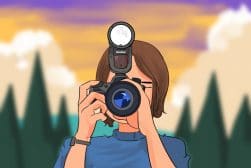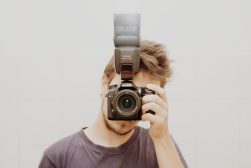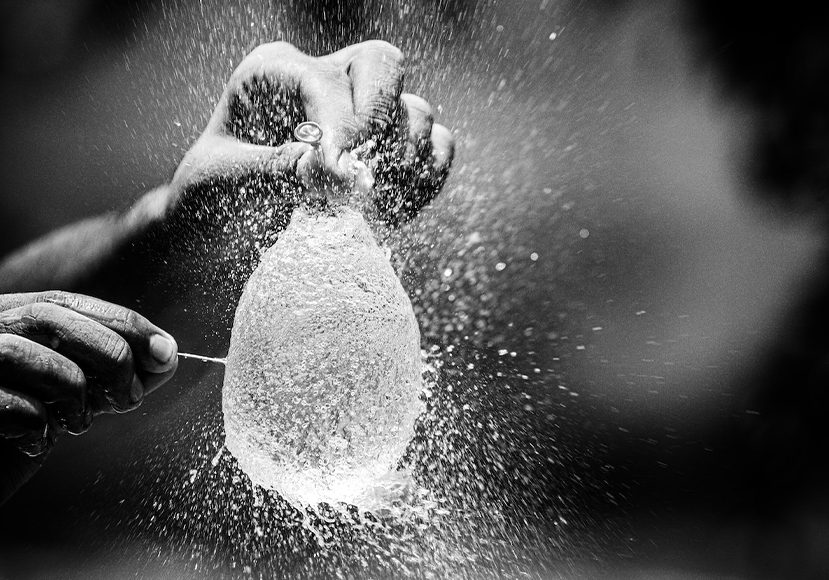
High-Speed Photography Tips, Settings & Examples
Looking to capture photos of fast-moving subjects? Here's everything you need to know to get started in high-speed photography.
Learn | By Jeff Collier
How does high-speed photography work?
As a DSLR fan, I’ve learned how to use faster shutter speeds and flash for up-close action shots that seem to freeze movement in motion.
I like to experiment with camera settings to change the flash duration for action and sports photography.
In this guide, I’ll show you how high-speed photography works and how to master fast-moving subjects with ease.
Keep reading to learn more about high-speed photos on a DSLR camera.
- Want to learn the opposite?: Guide to Slow Shutter Speed Photography
What Is High-Speed Photography?

Eadweard Muybridge, Animal Locomotion, 1887, National Gallery of Art, CC0, via Wikimedia Commons
High-speed photography is the art of capturing very fast phenomena on camera that you otherwise couldn’t see with your naked eye.
For example, this style of photography captures the exact moment a balloon bursts or raindrops hit the ground.
Most of the time, high-speed photography involves close-ups of different objects, although it’s also used in sports photography for on-field action.
High-speed photography holds a special place in history, as it’s allowed us to delve deep into the science of our world.
High-speed photography was first demonstrated in 1878 when Eadweard Muybridge created a photographic sequence of a galloping horse.
A supersonic flying bullet was captured on camera by Peter Salcher in 1886, opening the door for air and space travel.
By the early 20th century, high-speed techniques were used throughout scientific and aeronautical research.
The Society of Motion Picture and Television Engineers (SMPTE) set the global standard for high-speed photography in 1948, defining it as a set of images with three consecutive frames or more.
High-speed images must be captured on cameras with 69 frames per second or higher.
What is High-Speed Flash Photography?

Credit: Pixabay
High-speed flash photography, also known as high-speed sync photography, solves one of the most common problems with high-speed photography: flash duration.
Most DSLR cameras sync at 1/250th of a second, so a shutter speed faster than that won’t work with the flash.
When flash fires, the light comes out in milliseconds. Going above the sync speed means the entire frame isn’t revealed when the flash fires.
In other words, the camera curtain blocks some flash, so it doesn’t reach the sensor. Ambient light still exposes normally, but the flash is hidden within the frame.
As you increase the shutter speed even higher, more flash is blocked until you can’t even see it in the shot. That means you’ll get the same exposure as if the flash didn’t fire at all.
High-speed sync photography solves this issue by pulsing flash through the entire exposure, offering a similar effect to continuous light.
How Much Do You REALLY Know About Photography?! 🤔
Test your photography knowledge with this quick quiz!
See how much you really know about photography...

High-speed sync camera settings provide more light in an ongoing burst mode. With an even distribution of light, it’s much easier to capture high-speed images in a dark room.
To use this sync solution, you will need a flash head and a compatible receiver.
Where Is High-Speed Photography Used?

Credit: Moussa Idrissi
High-speed photos capture fast-moving objects, which provides compelling imagery across many different industries.
It’s especially useful for capturing photos of falling water droplets, splattered paint, and flying objects.
More and more product photographers are using high-speed photography to their advantage, such as showing food falling into liquid or the swirl of a wine glass.
While such close action isn’t visible to the human eye, high-speed images give people a better idea of how food and lifestyle products work.
High-speed photography continues to be used for scientific purposes, too. Scientists use this technology to closely examine movement, surface tension, and gravity.
Whether it’s a water drop or a bursting balloon filled with air, fast-moving subjects are best captured with the lowest ISO possible and manual controls for focus and flash.
What Equipment Do I Need to Do High-Speed Photography?
Before you start shooting high-speed photography, you must have the right equipment to capture the perfect shot even with incredibly fast movement.
Here’s all the equipment needed for this photography style:
- DSLR camera
- Adjustable lens
- Flashes
- Receiver
- Tripod
- Shutter release cable/remote
I recommend a 24-70mm zoom lens for balloons and a 100mm macro lens for close-ups of liquid sculptures and water splashes.
I also suggest having four flashes on hand in case you need more light to capture the perfect moment on camera.
Setting Up the Composition
Once you have the right lens, it’s time to set up your shot. Composition is key, and you’ll want to ensure the backdrop is clean and large enough to fill the whole frame.
When shooting at night or in a dark studio, make sure no light leaks into the frame.
Next, set up the object on a flat surface to fill the frame as desired. I like to use a black cloth to cover the table, so it doesn’t take away from the main subject.
Make sure the external flash is out of the viewfinder and pointed directly at the side of the subject.
If you have multiple flashes, position them on both sides of the object with the trigger nearby but still out of the viewfinder.
It may be worthwhile to check the equipment manual for specific instructions on setting up the sound trigger on the external flash.
One more tip for a high-speed photography shoot – remember to cover floors and furniture before using paint, wine, and other potentially messy subjects.
Camera Settings
When shooting high-speed photography, you should manually adjust camera settings and sync the flash and shutter so you get just enough light.
I recommend these settings to start:
- Bulb camera mode
- f/11 – f/16 aperture
- 100 – 400 ISO
- Manual focus
- Low-power flash
In terms of shutter speed, try 1/250, 1/1000, 1/2000, or 1/4000 depending on the image and how fast it’s moving.
Test shoots are key to capturing the perfect moment of movement on camera. See if you need less power or more focus for a clean, crisp finish.
High-Speed Photography: A Step-By-Step Workflow
Now that you know the basics of high-speed photography, you can test it out for yourself.
Choose a fun subject with dancing colors, such as a wine glass or mid-air paint splatter, and check for ambient light throughout the entire scene to help you adjust flash accordingly.
Follow these steps for the best photo results from a high-speed shoot.
Step 1: Set up in a dark room
A dark room sets the scene for captivating action photos of different objects.
Set the camera on a tripod and don’t forget the shutter release cable.
Start the flash on the lowest power setting with an ISO of 100 and increase it if the flash power isn’t quite enough.
Just ensure the aperture is between f/11 and f/16 with adequate focus for a fast-moving subject.
Step 2: Release shutter and fire flash
I recommend having an assistant on hand to help with this step.
It always helps to have someone else who can press the shutter release for you while the flash is fired or help put the object in motion.
However you delegate these tasks, just remember to create the action with one hand, whether it be releasing a water drop or popping a balloon.
Wait for the perfect moment and fire the flash to capture the shot.
Don’t be discouraged if it takes a few tries, especially when creating the motion yourself.
Step 3: Burst mode
Now for my secret trick. If after reviewing your first few attempts you’re not happy, try burst mode, which is available on most cameras nowadays.
In high-speed burst mode, the camera will start capturing images once the shutter button is pressed and continue until it’s released. This should give you up to 10 shots per second.
Press the release button in one hand and perform the action with the other. Once you complete the action, let go of the button and check your shots.
Don’t forget to switch to manual mode with at least a 1/125 shutter speed, and attach the master flash to your camera so it fires simultaneously with the shutter.
5 Fun High-Speed Photography Ideas
If you want to give high-speed photography a try but you’re not sure where to start, here are five of my favorite subjects to capture.
With all of these ideas, remember to check the high-speed sync settings and have multiple flashes on hand so you can get the perfect amount of light for the best shots.
Wine glass
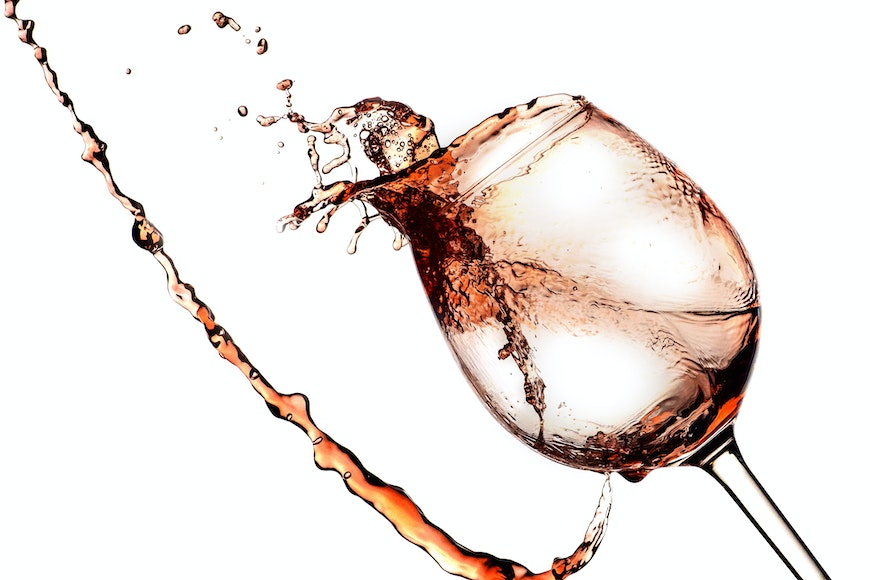
Credit: Evgeniy Alekseyev
Show off the delicious colour of a rich red or crisp white wine by swirling the glass or tipping it over.
I like to take a few different glasses and pour the wine out, creating a unique shape with the liquid collision.
High-speed photography offers a much closer look at tiny drops of wine and makes for intriguing art that looks great on the wall or in coffee table books.
Balloon pop
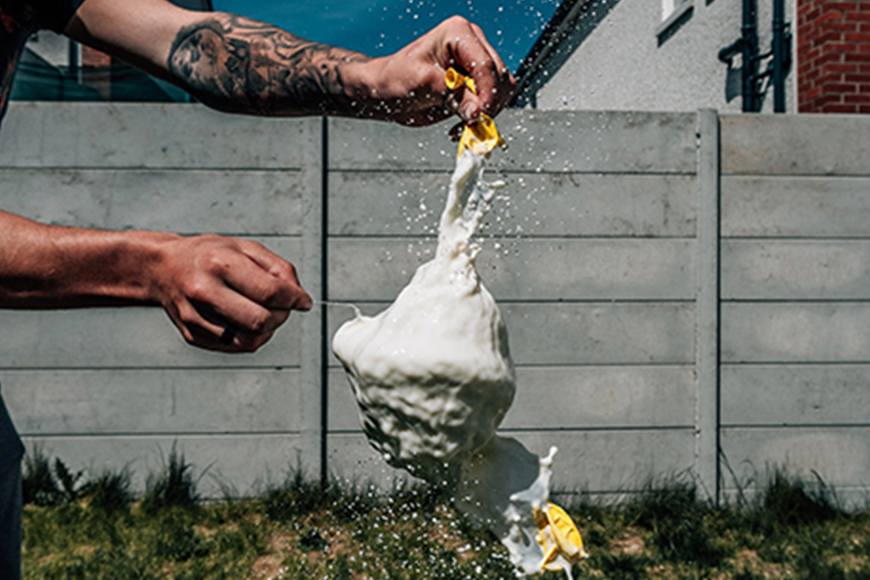
Credit: Lukas Medvedevas
Another intriguing option for high-speed photography is popping a balloon filled with water.
For a split second, the water will appear in the same shape as the balloon before falling and hitting the ground.
This makes for really neat images, as long as you have the flash synced up as you snap the photo right when the balloon pops.
Paint sculptures

Credit: Kelly
High-speed paint photography is a great way to experiment with up-close shots of objects in motion.
When you add a touch of paint to a speaker and play sound, the vibration causes the paint to jump, making neat shapes and sculptures.
I recommend shooting in a dark room with a black cloth on the table and speaker so the dancing colors really shine through.
Water galaxy

Credit: Ritesh Arya
Water is one of the easiest moving subjects to work with when first starting out in high-speed photography, and it’s less messy, too.
Take a tennis ball soaked in water and bounce it off the table to make a gorgeous galaxy. You’ll want a laser light and smart trigger to fire the flash at the perfect moment.
Again, a black background image is best, creating the illusion of space. If you want more color, consider adding a few drops into the water first.
Water drop

Credit: Frans van Heerden
One more idea for high-speed water photography is to focus on a single water drop and what happens as light passes through it.
You can use a water bottle, syringe, or tap to release drops and capture the action on camera.
Place a photo in the background, which will be reflected within the water drop. I’ve tried it with a map, painting, and flowers in the background, which all create cool final images.
FAQ
How fast is high-speed photography?
High-speed photography is defined as at least 69 frames per second. During a high-speed photography shoot, you will need a 1/1000s shutter speed or faster for the best results. This way, you can get the largest depth of field and a crisp, up-close shot.
What is considered a high-speed shutter speed?
Most photographers agree 1/250s and 1/500s are fast shutter speeds. The newer your camera is, the more likely it has even higher speeds like 1/4000th or 1/8000th of a second. The faster the shutter, the shorter the exposure and the easier it is to freeze action in each frame.
Why would you take a photo with a high shutter speed?
A high shutter speed effectively freezes time with a short exposure while also avoiding blur. A faster shutter is recommended for sports photo shoots and action shots such as bikes, boats, or racecars. If you want to capture any moving object up close, a faster shutter speed and flash sync makes a big difference.
Does high shutter speed affect image quality?
A higher shutter speed can improve image quality depending on your camera settings. Less light hits the sensor with a fast shutter speed, leading to darker photos unless you use flash. However, a fast flash and shutter can reduce blur and capture objects in motion with a higher-quality finish.
What is used in high-speed photography?
Most modern cameras come with a fast shutter speed and high-speed sync options. A DSLR with laser trigger mode is the way to go, and you also want a narrow aperture, a tripod, and a remote/cable to release the shutter. Make sure you have a few flashes and a compatible receiver to get the extra light needed to sync up with the shutter.
What techniques can you use to capture high-speed photography?
High-speed sync is the most popular technique for taking photos of a water drop, speeding bullet, or other fast-moving objects. Most DSLR models let you manually change the shutter for a faster exposure time. Make sure you have a compatible flash and receiver for optimal light conditions.
Final Words
As someone who teaches photography for a living, I appreciate how high-speed photography offers a new perspective on a single water drop or burst of color.
It’s amazing how you can get a high-speed photo in a dark room with a fast shutter and synced flash.
I hope you enjoyed these high-speed photography ideas and are ready to do some test shots with your DSLR camera.
What do you think about using a higher shutter speed? Do you have any more high-speed photography ideas or questions? Let us know in the comments!

Check out these 8 essential tools to help you succeed as a professional photographer.
Includes limited-time discounts.








